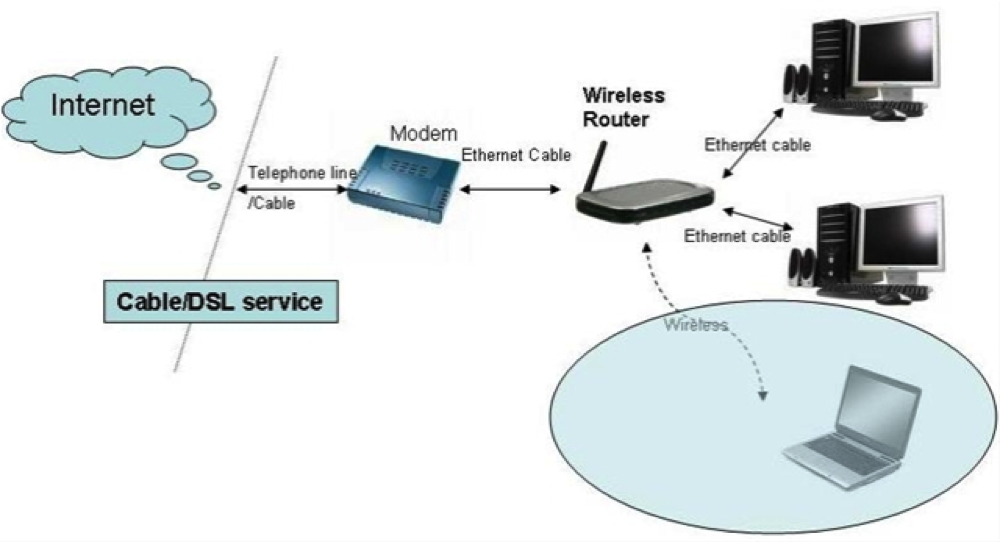Know Your Internet Equipment
There's much more to using the Internet than just having a computer. The world of wireless Internet equipment can be a little intimidating, and understanding the terminology is vital.
There's much more to using the Internet than just having a computer. The world of wireless Internet equipment can be a little intimidating, and understanding the terminology is vital. Today we’re going to look at some hardware and software definitions surrounding your Internet equipment so that you can get better acquainted. It’s likely you have seen these terms in the past, but just haven’t been sure of their meaning. Knowledge is power, so let’s power up.
Hardware and Equipment
These are actual physical items you need to get connected to the Internet.
Modem – An electronic device usually provided by your ISP, which makes possible the transmission of data to or from a computer via telephone or other communication lines. When your Internet line comes into your house, this is typically the first—and sometimes the only—box it connects to.
Router – A device that joins multiple networks together. In a typical home setup, the router is plugged into the modem, allowing you to connect multiple devices to the Internet either by Ethernet cable or wireless. There are several different types of routers with different functions. A router can act as a hardware firewall. Many engineers believe that a router provides better protection against hacking than a software firewall if it's set up correctly.
Ethernet cable – The most popular form of network cable used on wired networks. Ethernet cables connect devices on local area networks such as PCs, routers, modems, and switches.

Network Definitions
These items are necessary parts of your Internet experience though you don’t necessarily see or handle them.
ISP – Stands for Internet Service Provider. This is the company that provides your Internet service.
LAN – Stands for Local Area Network. A LAN supplies networking capability to a group of computers in close proximity to each other such as in an office building, a school, or a home. LANs are typically connected through cables or wireless system. A LAN is useful for sharing resources like files, printers, games, or other applications.
WLAN – Stands for Wireless Local Area Network. WLAN supplies networking capability to a group of computers in close proximity to each other through a wireless system.
WiFi – A popular technology that allows an electronic device to exchange data or connect to the Internet wirelessly using UHF radio waves rather than a hard — or actual, physical — cable. WiFi is often used as a synonym for WLAN.
WEP – Stands for Wired Equivalent Privacy. WEP was designed to give wireless networks the equivalent level of privacy protection as a comparable wired network. However, the underlying technology behind WEP has been demonstrated to be relatively insecure compared to newer protocols like WPA.
WPA – Stands for WiFi Protected Access. WPA was the WiFi Alliance’s direct response to the increasingly apparent vulnerabilities of the WEP standard, and eventually came to replace WEP altogether. WPA was formally adopted in 2003, a year before WEP was officially retired. WPA improves on the authentication and encryption features of WEP (Wired Equivalent Privacy).
SSID – Stands for Service Set Identifier. An SSID is the name of a Wireless Local Area Network (WLAN). All wireless devices on a WLAN must employ the same SSID in order to communicate with each other. The SSID on a wireless network can be set either manually, by entering the SSID into the network settings, or automatically, by leaving the SSID unspecified or blank.
Knowing this information can save you time and heartache, especially if you’re trying to communicate about your system or fix a problem. Have questions about other terms or definitions related to your Internet equipment or connectivity? Leave us a comment below and let us know.

 Member Connect
Member Connect